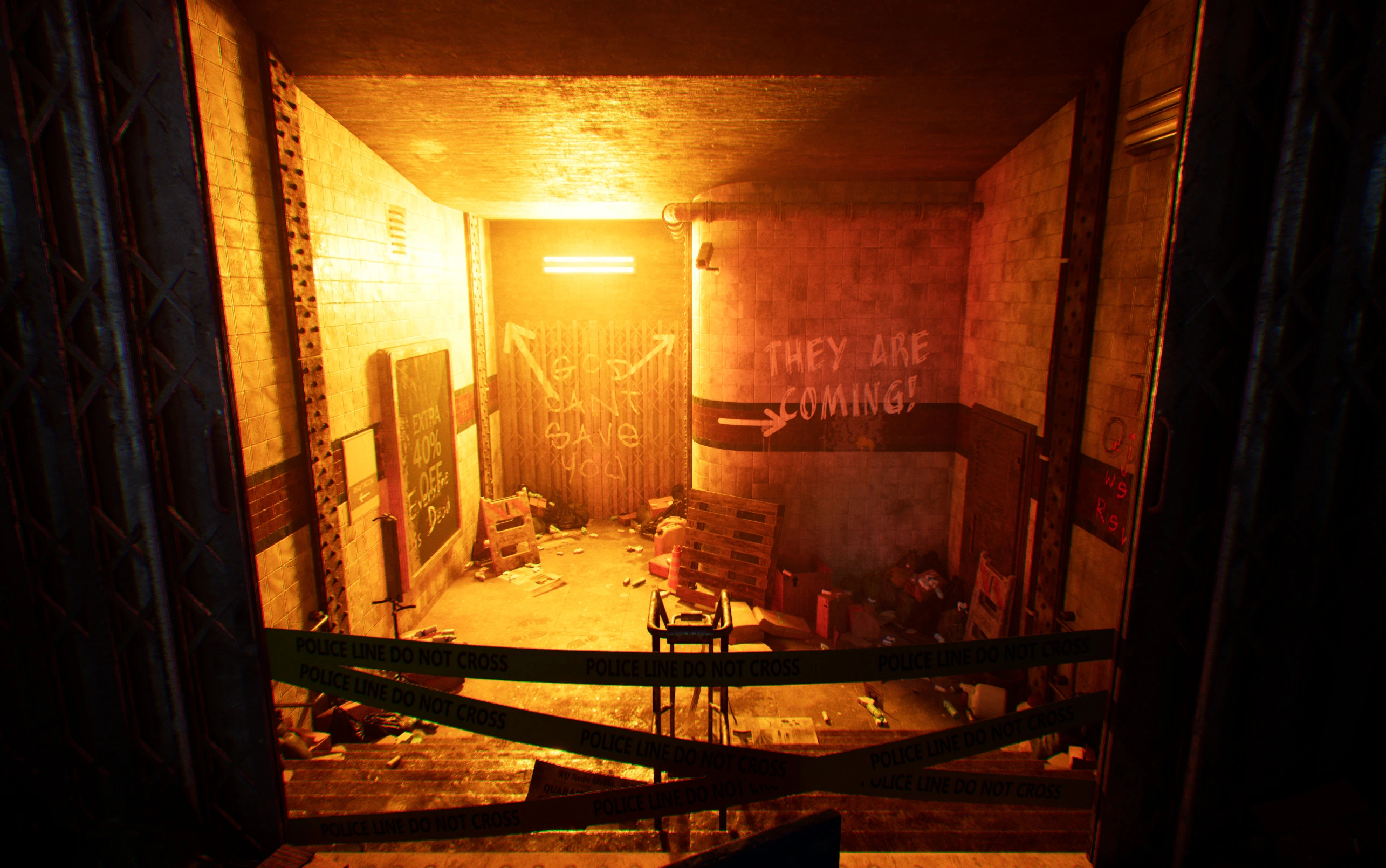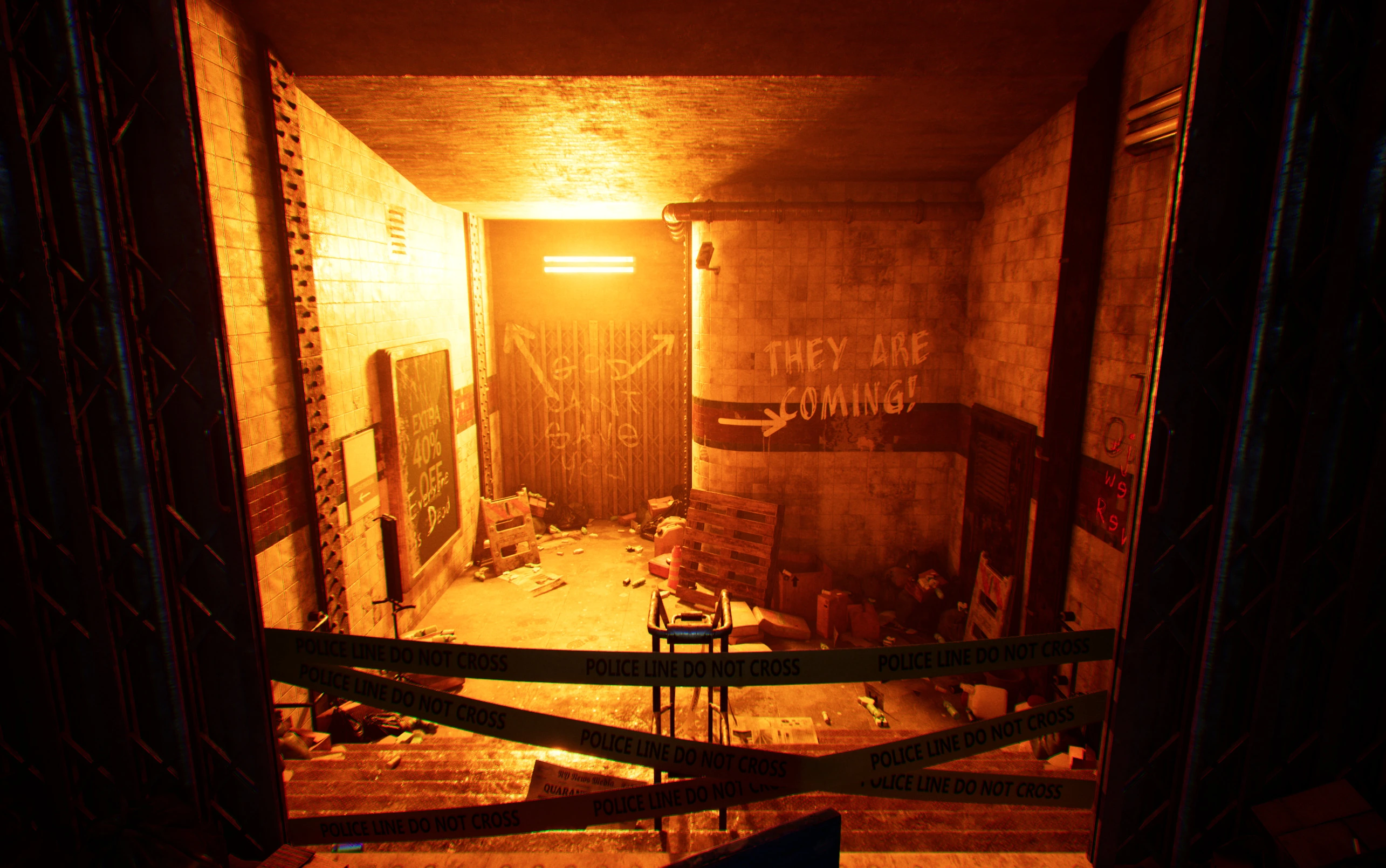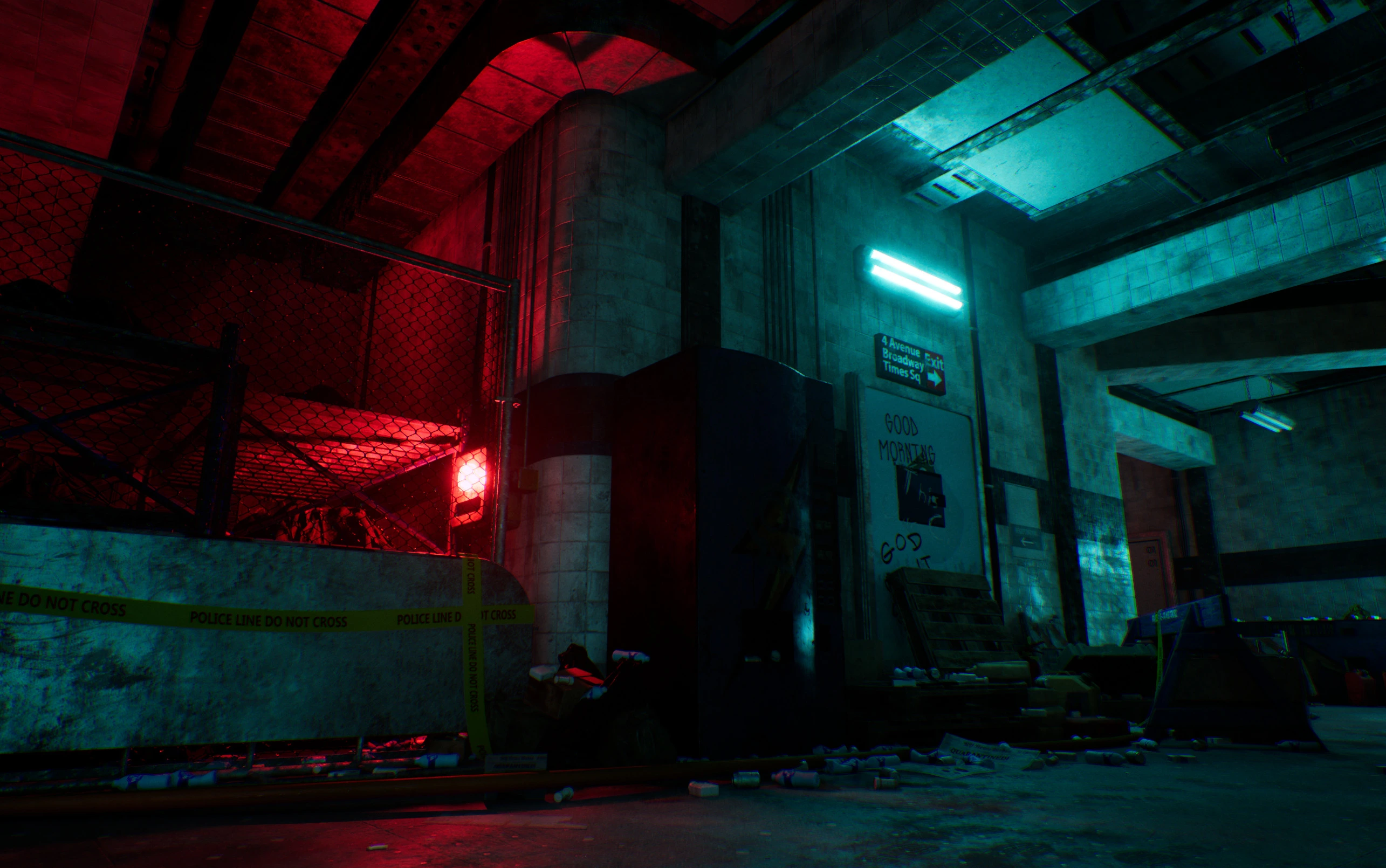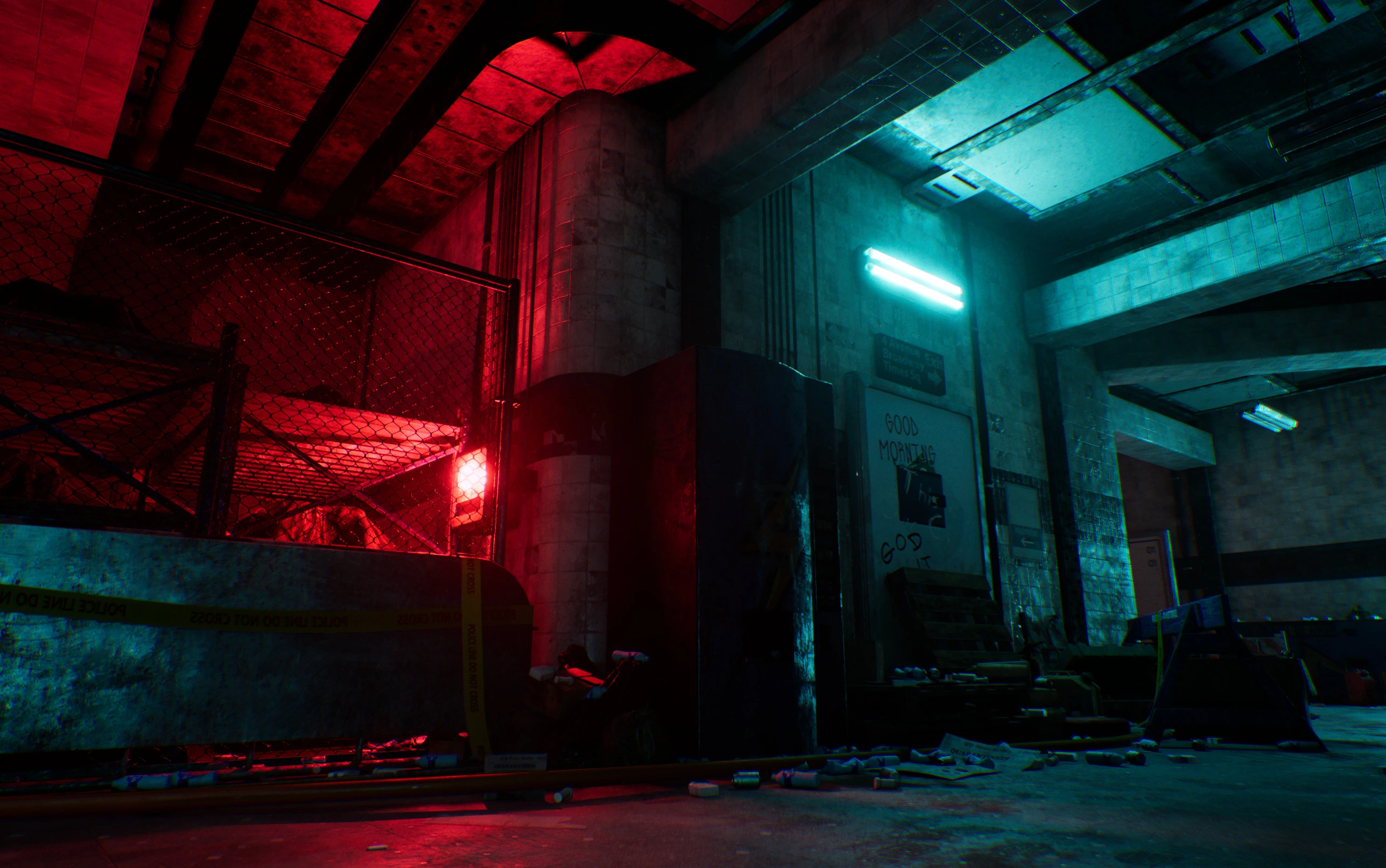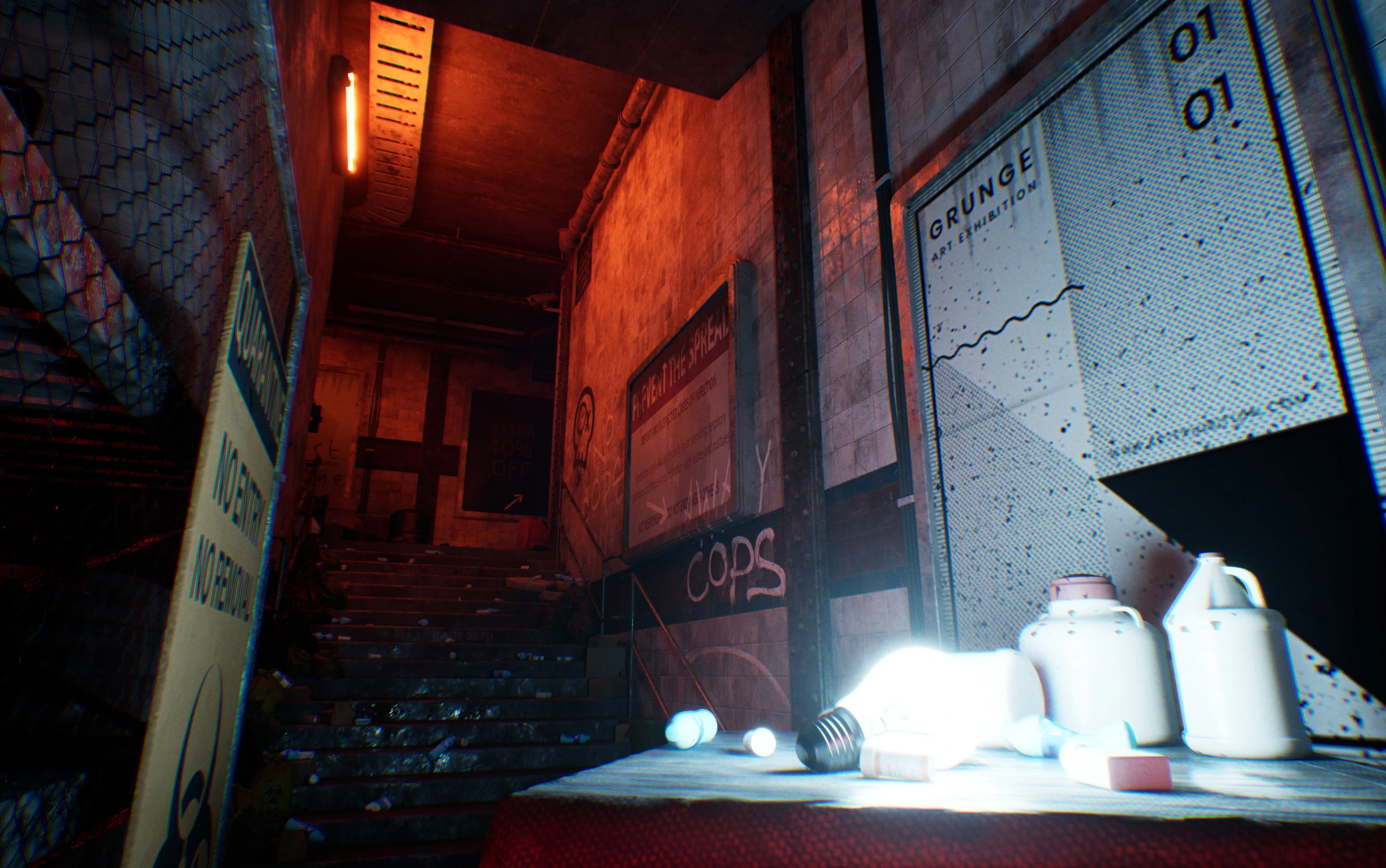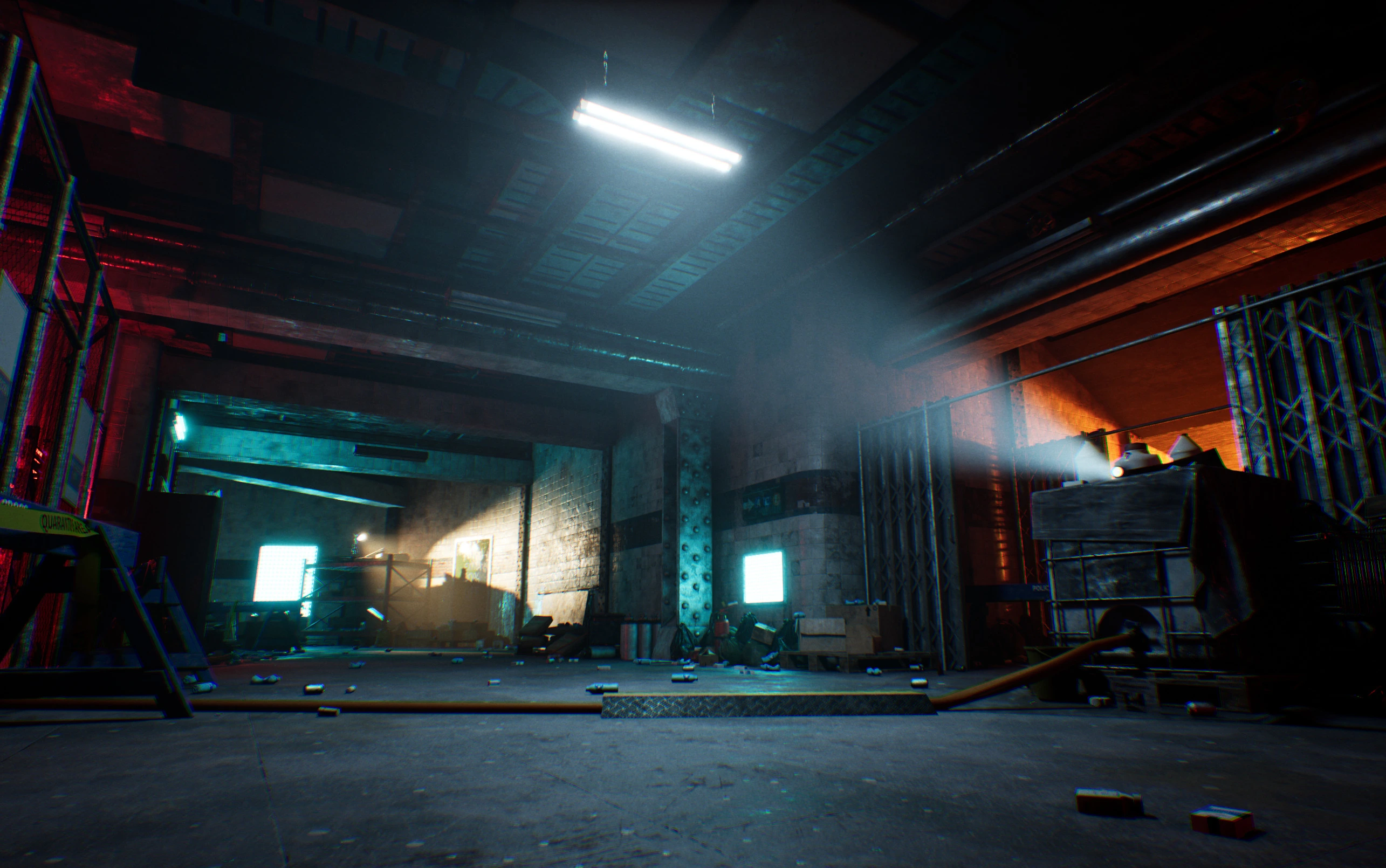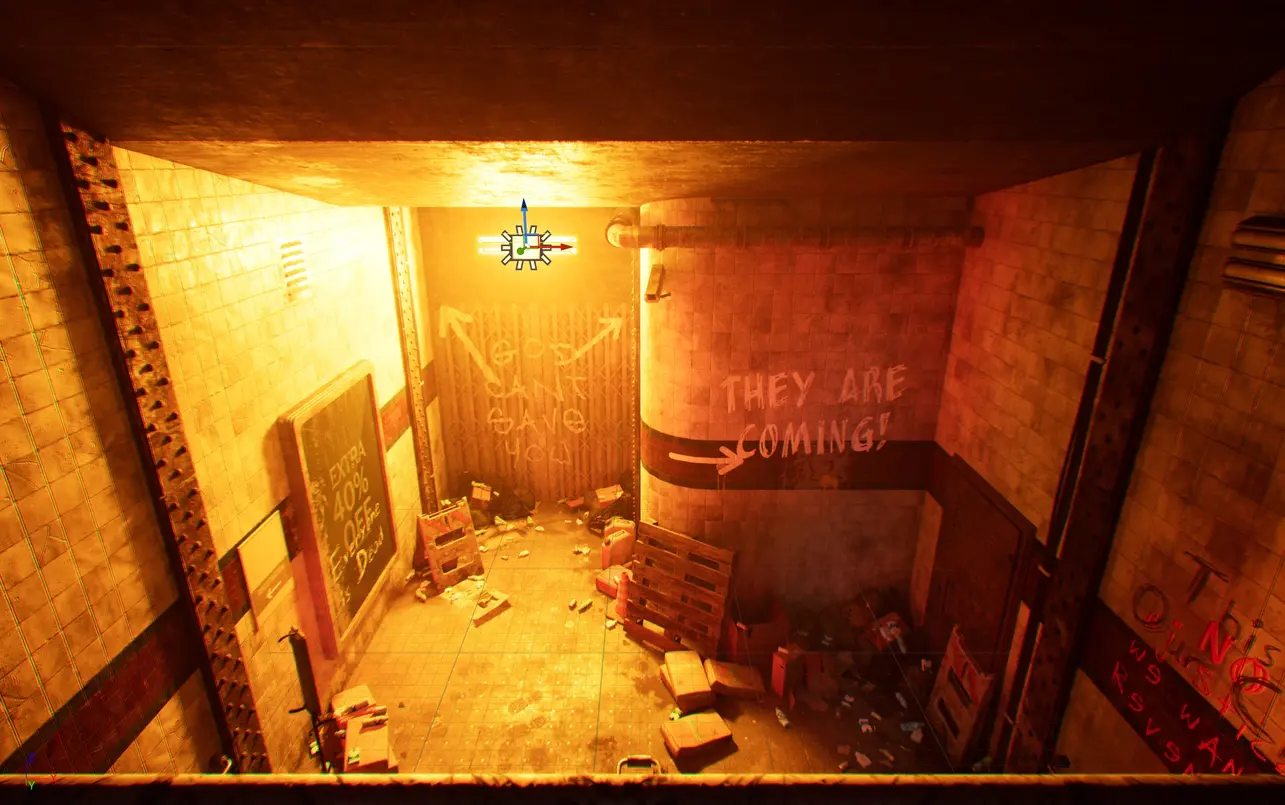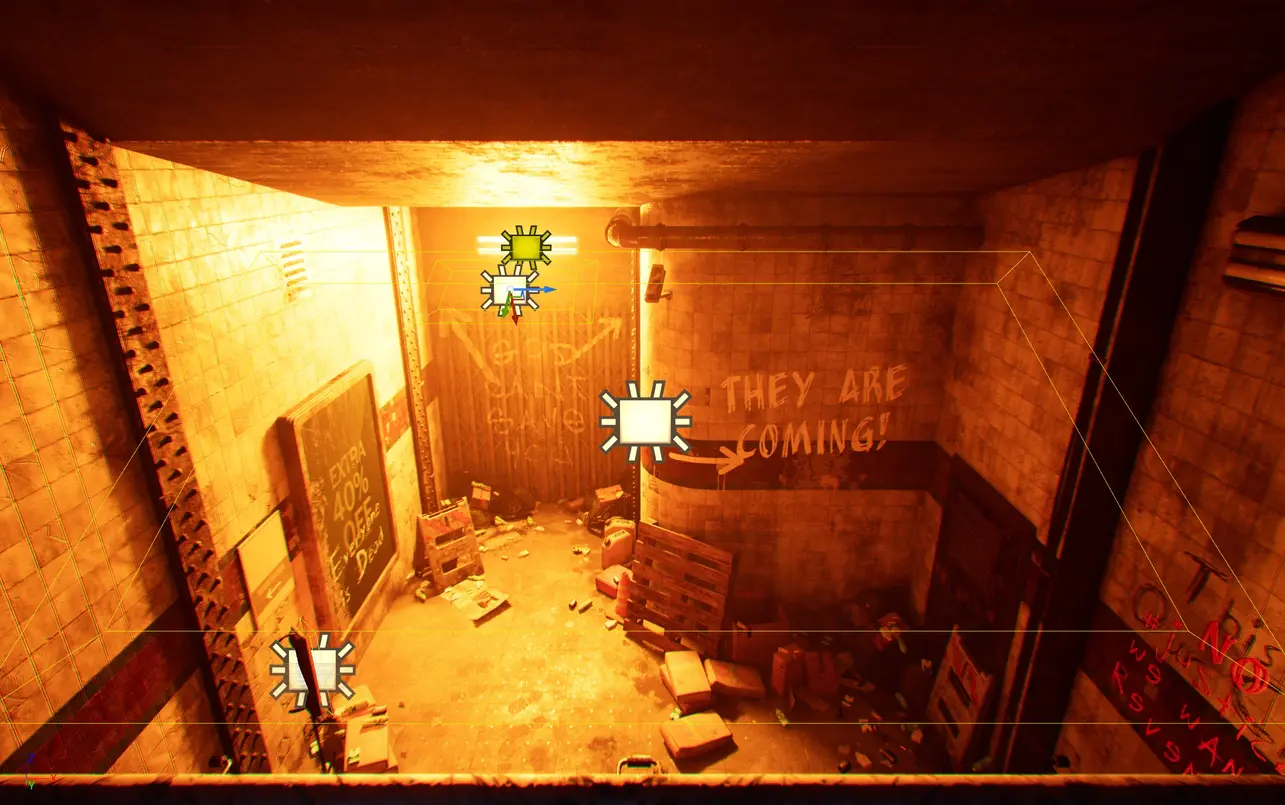
The Spawn Point I perceive here as the player spawn point. To create a welcoming and secure atmosphere, I maxed out the intensity of the main light, bathing the room in a comforting warmth. Also, I placed a floodlight projecting a gentle, warm orange hue onto the right-side wall.

Guidance Lighting Upon stepping out of the spawn point, players will immediately notice a flashlight. The flashlight targets a warning sign, guiding them to explore cautiously.

Engaging Lighting This spot was initially too dark to see anything. To fix this, I added a glowing button to the wall, catching players' attention and encouraging exploration. The red light also stands out against the teal surroundings.

Accent Lighting Initially, the end of the corridor appeared rather plain and uninspiring. To enhance its ambiance, I chose a lamp with a broad beam angle and placed it directly above the shelf.

Wide-angle View This is how players would perceive the corridor. The light casting onto the wall noticeably enhances the overall contrast, adding depth to the scene.

The Opposite Side The opposite side of the corridor is dimmed with a dark red ambiance, as it does not serve any significant function. Nonetheless, I added a brighter purple glow in the middle to attract players towards the room filled with loot.

Upstairs A bulb stands in the entry to the second floor, creating a sharp contrast with its dark surroundings, instantly capturing players' attention and potentially suggesting that "there's more to explore beyond the wire fence."

Level Exit In accordance with its symmetrical design and to introduce more variety, I employed contrasting colors. This approach implies that the two exits could lead to distinct outcomes, allowing the players to make their own choice.
